Tunisia: Ramadan edition
- Steph Fernandes
- Jul 17, 2022
- 9 min read
Having loved Morocco and Egypt, I was keen to explore a fellow North African country: Tunisia. I'd wanted to visit for some time and booked to go over the Easter weekend of 2022 with a good friend and travel buddy, Becca.
The week before the trip, after dealing with several flight cancellations, we realised that we'd be in Tunisia, a Muslim country, over Ramadan. A colleague happened to be there the week leading up to Easter and informed us that most restaurants do in fact close between sunrise and sunset (which was at about 7pm), which we hadn't anticipated at all. Regardless, we were excited for the experience.
Day 1
Due to the most recent wave of covid infections in the UK, we were warned of severe travel disruptions over the Easter weekend and as expected, there were long queues for every restaurant in the airport and our flight was delayed. After a stopover in Milan, we made it to Tunisia (Tunisair offered food which was a nice surprise, then a trolley offering solely cigarettes passed through the aisle which was unexpected). Similarly to Cuba, Tunisia also has a closed currency, meaning that Tunisian dinars cannot leave the country so you need to exchange money on arrival instead of beforehand, however that wasn't an issue and the exchange rate was 1:3,8 (and everything was very cheap, with a train ticket being about 40p).
Tunis airport was very reminiscent of Luxor airport in Egypt and on landing in Tunisia, it was chaos to get through border control, with several people pushing their way through the line and extremely slow border officers. Nonetheless, we soon made it to arrivals and headed towards our Airbnb. The taxi driver stopped in front of a closed gate and informed us that the house on the other side of the gate was where the president lived; although our Airbnb was lovely, it wasn't in fact shared with the head of state. That said, our Airbnb featured a swimming pool and a shared garden in which two adorable dogs could often be encountered and was situated in front of the Greek embassy.
As aforementioned, a colleague happened to also be in Tunisia, however our first night was her last night so we arranged to have dinner together. We booked an Iftar menu, which is the big meal that Muslims have after sunset during Ramadan (which is in fact the name of a month in the Islamic calendar), at El Mrabet in the Medina. Unfortunately, we got lost and had no internet to find the restaurant, when a fellow tourist approached us asking if we knew of any open restaurants. After inviting the friendly German to the restaurant with us (which he used his 4G to find), we met up with my colleague and her friend, and were later joined by a local that she'd met previously, Alaeddine (similar to Aladdin but whom I will henceforth refer to as Ala). The restaurants could be counter intuitive as they would often be located on the top floor of a former house so you would let yourself in and walk through which felt slightly odd. It transpired that we had arrived halfway through Ramadan and that the 14th day was commemorated with a special menu involving couscous. The food was delicious, comprising of brik, dates with nuts, soup, lamb and couscous, salads, mint tea with pine nuts, bouza, and bsisa. There was also a musician performing typical Tunisian music which was nice.
We then attended a musical night featuring local pop star, Asma Ben Ahmed, who looked to be about 25 but was in fact 37. We smoked shisha, which had a completely different flavour to the shisha in the UK, and enjoyed the music. Ala informed us that during Ramadan Tunisians look forward to the evenings and each night will go out and enjoy music, smoke, and dance until the early hours of the morning. Tunisian dancing uses a lot of hand movements and is very elegant and it was lovely to see everyone enjoying themselves. Smoking indoors was very much the norm and many people smoked both shisha and cigarettes, although it is apparently disrespectful to smoke shisha in front of your father. We also learnt that Tunisia wasn't a very conservative country: many women choose not to wear the hijab and alcohol is widespread outside of Ramadan. 95% of the population is Muslim and the language spoken is a mix of Arabic, French, and Amazigh words (Amazigh were one of the original populations in Tunisia before the Arabs arrived) and the dialect is not easily understood by Middle Eastern Arabs.
Day 2
Despite sunny skies in the UK, it was cloudy in Tunis, so we decided to explore the Roman ruins in Carthage and our local area of Salambo whilst it wasn't too hot. We started our day visiting Salambo beach, which was only a 6 minute walk from our Airbnb and despite the breeze, we dipped our toes in the sea and enjoyed the view. We then headed up to the Carthage Punic Port, which was pretty and was where various locals were chilling out. It was also here that we passed a group of teenagers, the last of which bowed and welcomed us to Tunisia, which was very wholesome and sweet. We then walked towards the Roman ruins of Carthage, which included Byrsa Hill, an amphitheatre, Roman villas, Carthage Museum, and a Roman theatre. Conveniently, one ticket costing 12 Tunisian dinars (around £3) allowed entry for all of these sites and more, including the Sanctuary of Tophet, a sacrificial site and burial ground for infants. Although I'm not hugely interested by Roman ruins, especially having seen them previously throughout Italy and Jordan, I was impressed by the museum of Carthage as the views were amazing and it was located by a large cathedral: the Acropolium.
For dinner, we enjoyed another Iftar at Le Duc on the recommendation of Ala, which was delicious, although similar to the previous night's dinner, but with a tuna-filled brik, peanut butter enclosed in dates, and a fruit salad for dessert. We then joined Ala for mint tea and music at Panorama, a café in the Medina overlooking the Al-Zaytuna mosque. Unfortunately, non-Muslims cannot enter the mosque, however can explore the courtyard provided that women have their hair covered. We really enjoyed Panorama and Ala even bought us jasmine-scented 'flowers' that the local kids were selling (see the central picture above). Throughout the night, musicians started performing and the café was filled with chatter, singing and dancing. We also learnt that throughout the second half of Ramadan the Medina becomes busier and more shops open as people search for gifts for the upcoming Eid, which was clear to see compared to the previous night.
For those who are unfamiliar with what a Medina is, it is the term for an old town in North African countries and is often encased by walls (as in Marrakesh) or gates (as in Tunis). The main gate in Tunis was called Bab el Bahr and was lit up at night in different colours, as seen in the video above. It was on this day that we also learnt two colourful Tunisian insults, the first of which translates to 'I hope you get hit in the face with a dick' and the latter is the equivalent of 'shit' but pronounced 'za'.
Day 3
The place that we were most excited to see on our trip was 'Sidi Bou Said': Tunisia's Santorini. Luckily, the train that we took into Tunis (which was very run-down but cheap and did the job) also went to Sidi Bou Said, La Marsa beach and even Carthage's Roman ruins. We'd planned to spend our morning at Sidi Bou Said, however after missing our stop we instead headed straight to La Marsa. This was the first day that was truly hot and sunny, and was perfect for a beach day; furthermore, the beach was littered with bins, which weren't commonplace at all throughout Tunis. We wandered along the sea front, watching a windsurfer and kitesurfer in the sea, before finding a café for lunch.
As mentioned previously, most restaurants were closed during the day for Ramadan, however there were a few that were secretly open, especially in the more touristy areas, including La Marsa. We found an open café and sat on the rooftop and enjoyed our pasta (a staple in Tunisian cuisine, after all it is right next to Italy) and coffees as well as the beach view. We learnt that unlike the Brits, Tunisians tend to sip on their coffees, which we struggled to do. At one point, we looked towards the beach and to our surprise spotted a camel camouflaged in the sand! After paying for the meal, we headed towards the camel for a mini photoshoot and then headed back towards Sidi Bou Said.
Sidi Bousaid was my favourite part of the trip by far; the blue and white buildings were stunning, the studded doors beautiful and the sea views spectacular. That said, I did have henna forced upon me by a lady for Ramadan and here was where we experienced the most storeowners trying to get us into their shops. As per usual, I did buy a magnet, managing to haggle it down from 20 TD to 5, which I was happy with. One local even offered to buy my friend for 10,000 camels (stating that it would be 20,000 if she'd had blue eyes and 50,000 had he been rich!) - other locals simply offered us information about the area and welcomed us to Tunisia. Various Tunisians throughout the trip also stated that they liked our accents and could identify the British accents through films (often specifying Harry Potter). After exploring the gorgeous town, we bought local desserts, including banbalouni doughnuts and swirl pastries, to try and they did not disappoint. I would very strongly recommend visiting Sidi Bou Said as it is truly stunning and unmissable on a trip to Tunisia.
In the afternoon, we went for a dip in our Airbnb and lounged about in the sun, before meeting Ala at Zebra Club in Gammarth for a show. Truth be told, the Bolt driver kept making wrong turns and getting lost, and we were the first to arrive to the abandoned area which was slightly creepy. Nonetheless, we eventually found Ala and made it into the club, where dancers, fire-eaters, and musicians performed throughout the night. It was a great night, but it was also our last time seeing Ala, which was very sad as he'd taught us so much about Tunisia and been extremely helpful, offering us a new perspective. For example, although it was common for locals to dislike the former French colonisation, Ala noted that most locals celebrated the spread of Islam, whereas he felt that his ancestors weren't the Arabs either, but instead the Amazigh people who worshipped many gods but mainly prayed to the moon. He also informed us that the Tunisian government don't prioritise the environment, but recognised that global warming will have profound effects on the country. He was very insightful and made our experience very special, even holding up his taxi in order to make sure we got into our Bolt alright.
Day 4
Before heading to Tunis for our final full day, we enjoyed breakfast at our Airbnb. We had been very kindly supplied with bread, spreads, coffee and milk, which was a lifesaver during Ramadan, and was extremely appreciated. The medina's souks tend to close early during Ramadan but were open in the morning, so we finally managed to explore them in as full swing as would be possible during Ramadan. Both the train and the Medina were very busy and although I wasn't at all interested in most of the things being sold, I did enjoy Souq el attarine, where one of the locals allowed us to smell the various spices and another offered us a free sample of a Tunisian dessert (similar to baklava). We then visited the Marché Centrale, which had massive quantities of fruit and veg, although a lot of it looked past their best (although it was 2pm by that point), as well as fish, meats, and cheese.
Lastly, we explored Le Lac, a natural lagoon near Tunis and also the site of Tunisia Mall. We ate a crêpe in the mall (with the most generous offering of Nutella I've seen to-date), before walking along the lagoon; the promenade was lovely and the walk was very relaxing. Funnily enough, we also found a pylon disguised as a palm tree, as could be seen in Marrakesh. On the way to our final Iftar, we passed one of my favourite places in Tunis: Avenue Dag Hammarskjoeld. This avenue is situated alongside a bridge filled with artwork and graffiti, which I enjoyed greatly and can be seen in the central picture above. Our Iftar was at Palais Bayram and was delicious, with the main dish of lamb, potatoes and veg being served in a stone vessel. The menu was prolific but amazing and we were left stuffed to the brim.
Day 5
On our final day in Tunis, we found another hidden café in which we could order coffee and food, and despite a lady screaming at and hitting the waiter, we actually had a great time. We were offered cookies alongside our 'cafés au lait' and then tucked into a massive sandwich filled with cucumber, ham, cheese, lettuce, potatoes, and harissa (despite having ordered a humble ham and cheese sandwich). Two attractive guys kept looking over and eventually one walked over and invited us for a drink, which we accepted; he told us about his previous travels and even paid for our whole meal, despite our insistence that he didn't.
We then ordered a Bolt to the airport, who very kindly waited for us despite us not being able to communicate effectively with each other, which was a life saver as I had no internet or Wifi on the street.
Final Thoughts
Although Tunisia isn't as touristic as the fellow North African Morocco, it has a lot to offer and is well worth visiting. That said, Tunisia definitely has its downfalls, including a lack of seatbelts and lane discipline, a plethora of stray cats, and a lot of rubbish on the streets and train tracks. Regardless, the locals were extremely kind and helpful and various people welcomed us to Tunisia and offered us information for nothing in return. Various locals also suggested visiting the south of the country, where desert tours can be had, which is something I'd definitely like to experience.
















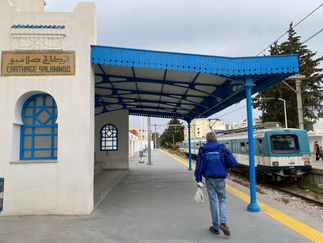

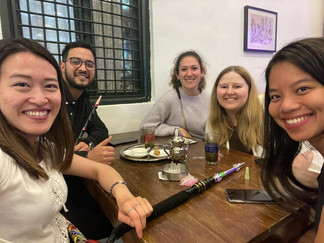



















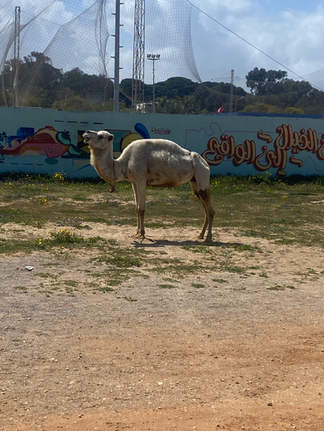













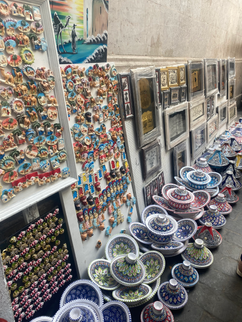



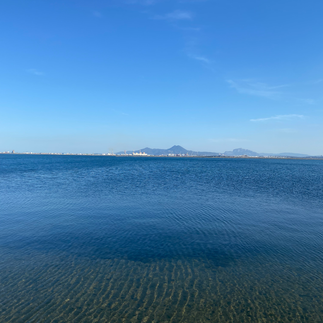








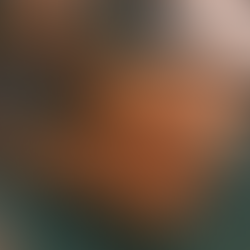

Comments